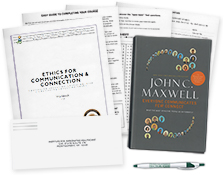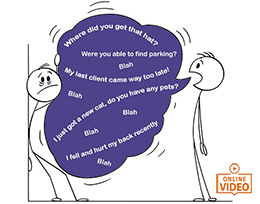Our minds are so often filled with future plans, opinions and bias that we listen half-heartedly to what others say. Effective massage therapists know that helping a client is as much about listening as it is about touching. Yet, really listening is often also one of the hardest things to do. It is tempting to interrupt and jump in with our own advice, to think ahead not hearing what the other person is saying, because we are busy formulating our own statement.
Most people want to be heard. In a massage practice you have both potential clients and long-term clients coming to you for a reason. They want to feel better. Being heard and understood is one of the most basic needs of human beings. Through the use of active listening your clients can be heard and you can make your massage session more effective.
Eight Tips for Effective Active Listening
While there are many ways of adding effective communication to your many skills, these are just a eight best ways to improve in the area of active listening:
- Keep an open and receptive mind.
- Be aware of your own body language. Crossing your arms creates a barrier to listening. Sitting with a relaxed posture is more open and inviting. Maintain as much eye contact as is comfortable for both individuals.
- Watch as well as listen. Body language may tell you more than words.
- Avoid external distractions. When conducting an intake interview with your client, do it in a quiet space. This means a place with no phones ringing, no other massage therapists or clients walking about. Sometimes the treatment room is the best place if you are in a multi-practitioner office.
- Allow time for the interview. Whether you are conducting an initial intake with a new client or follow-up interview with a long-time client, make sure to allow adequate time to get enough information to determine the type of massage techniques you should use. Rushing a client because of time constraints may mean not getting some valuable information that could affect the session.
- Allow the client to finish what he or she is saying without interruption. When it seems like the client has come to the end of what is being said, wait 2-3 seconds before responding.
- Repeat back what you have heard. Once the person has finished speaking you can repeat back what you have heard using your own words, paraphrasing what he or she has said and asking questions to clarify any unclear points. If the client has mentioned pain in hir or her leg this would be the time to ask what kind of pain, how often does it hurt, and what could have caused it.
- Respond appropriately. Don’t pass judgment on what the client is saying. If a client has a strained back muscle because of lifting heavy items, don’t tell the person it was a stupid thing to do.
Five Barriers to Effective Listening
In order to really learn the art of listening, there are also some pitfalls to watch out for that can impede communication between the massage therapist and client:
- Assuming you know the answer – Thinking you know the answer is assuming you know more about the client than the client who is telling you his or her story. It often leads to the listener interrupting before he or she has finished speaking or disagreeing with (and perhaps pre-judging) the client.
- Attempting to be helpful – Instead of really hearing what the client is trying to say, the listener is thinking ahead and trying to solve the problem, or at least what is thought to be the problem. The first few sentences may be heard, but the rest of what is said is missed because the wheels are turning as to what to do about it rather than listening.
- Treating the conversation as a competition – This may not happen frequently during intake for a massage, but it can happen when the massage therapist assumes knowing more than the client about a particular problem. It can also come from the client’s side of the conversation.
- Trying to impress or influence the client – This can occur if the massage therapist has just come back from an exciting seminar and learned new techniques. A client comes in for a Swedish massage, but the therapist has just learned deep tissue techniques and tries to persuade the client to take advantage of these new skills. The massage therapist may not hear that the client has contraindications for deep tissue techniques and ultimately cause him or her harm.
- Reacting to word triggers – There are times when certain words can trigger a negative, or disproportionately positive response. These “red flag” words may remind one of a past experience, or anther client. It is important for the massage therapist to remain as neutral as possible while still being empathetic to the client’s situation.
- And, a sixth bonus suggestion! – Make sure your office phone, cell phone (and the client’s) or other electronic communication such as a pager, is turned off, or at least set to silent, to avoid any distractions or interruptions during the conversation.
Listen attentively, respond with courtesy and respect. Sometimes a kind, empathetic listener can be as effective in healing as any form of therapeutic treatment.













